
At West Kington Stud, we are often asked about the optimum number of sperm in a ‘dose’ of semen, to achieve a successful pregnancy. In this article, Chris Shepherd BVSc MRCVS, from B&W Equine Vets, shares his insights into this fascinating subject.
The Journey of Spermatozoa through the Equine Reproductive Tract
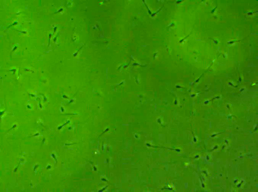
The hazardous journey for spermatozoa through the mare’s reproductive tract means that a huge excess must be deposited into the uterus at the time of insemination or covering. A fertile stallion can produce anywhere between 5 billion and 25 billion spermatozoa at ejaculation. Not all will be live, and not all the live ones will be viable but, bearing in mind only one is necessary for fertilisation, there are plenty to spare.
At a natural cover, the whole ejaculate (consisting of the spermatozoa and the seminal plasma produced from the accessory sex glands) is deposited directly into the uterus. If the mare is artificially inseminated, we are able to decide which parts of the ejaculate and exactly how many live spermatozoa are deposited into the uterus. Most ejaculates from a fertile stallion will provide sufficient spermatozoa to inseminate several mares, if they are available and ready at the time.
From Ejaculation to Insemination: Understanding Spermatozoa Numbers
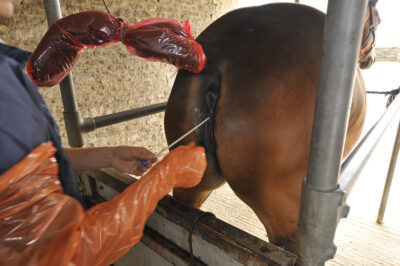
There is considerable debate as to how many live spermatozoa should be inseminated for that mare to have a reasonable chance of conceiving. Traditionally, it has always been accepted that 500 million is a reasonable figure. A stallion that ejaculates 20 billion spermatozoa that has 75% alive and viable would therefore be able to provide enough doses to inseminate 30 mares. However, 500 million may be a generous estimate and the required figure may be closer to 250 million. In reality, the fertility of the mare and the method of insemination will have a large influence on the number of spermatozoa that have to be inseminated.
The Impact of Spermatozoa Numbers on Insemination Success
Thawed frozen semen will sometimes have live spermatozoa numbers around 150 to 200 million and occasionally less, especially if a dose has been split. If this semen is inseminated within six hours of ovulation into a fertile mare using a deep uterine insemination (the catheter is passed up the uterine horn to be deposited adjacent to the oviduct and ovary) then the mare has a good chance of getting pregnant. It is always important for purchasers of frozen semen to know how many live spermatozoa there will be in the dose after it is thawed before they buy it. Supplying studs and marketing agents should be able to provide this information. On occasion, it may be necessary to inseminate even smaller numbers of live spermatozoa. The introduction of sexed semen means that insemination doses as low as 50 million may sometimes have to be used because the machines that sort the semen are unable to provide a higher dose in the required timeframe. Experimentally, pregnancies have been achieved with as few as 5 million sperm inseminated.
The Challenge of Uterine Defense Mechanisms
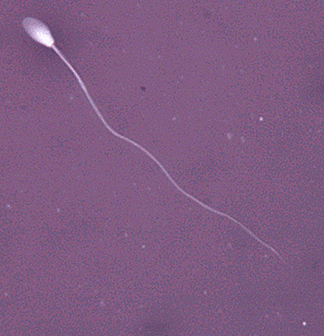
So why do so many spermatozoa have to be used when only one is ultimately going to be successful and fertilise the egg? The question is answered by an understanding of the sequence of events in the mare’s uterus following insemination; Semen deposited in the uterus provokes an aggressive inflammatory reaction to what the uterus considers as a foreign substance. The dead spermatozoa within the ejaculate are primarily attacked, but some live spermatozoa will succumb to the uterine immune system. In many cases, the seminal plasma has been removed from the ejaculate prior to preparing the insemination dose because it is detrimental to spermatozoa survival. However, one of its roles is to suppress the inflammatory reaction in the mare’s uterus at natural cover. Without it, the attack on the spermatozoa is more marked. Most spermatozoa that survive are pushed up the uterine body and horns towards the oviducts and ovaries by uterine muscular contractions. Half of them will travel up the wrong horn unless the mare is releasing eggs from both ovaries. Some will be lost by retrograde flow out of the cervix. A very small proportion (estimated at 0.0000007%) of the inseminated spermatozoa will enter and travel up the narrow oviduct. There they will attach to the wall of the oviduct and can survive for a few days awaiting the arrival of an egg released from the ovary at ovulation. The first one to penetrate the egg will fertilise it and prevent the entry of any others.
Ensuring Precision: Advanced Techniques for Spermatozoa Counting
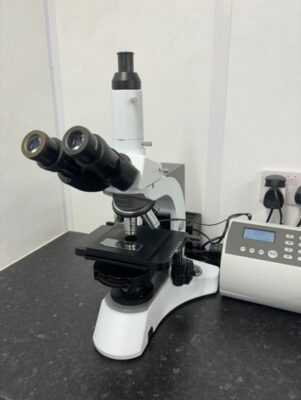 It is therefore important to be able to count the number of spermatozoa in an ejaculate. Inseminating more than is necessary will provoke more uterine inflammation and will lead to fluid formation. Inseminating too few will reduce the chances of the mare getting pregnant. It will also allow an estimate of how many mares can be inseminated from the one ejaculate.
It is therefore important to be able to count the number of spermatozoa in an ejaculate. Inseminating more than is necessary will provoke more uterine inflammation and will lead to fluid formation. Inseminating too few will reduce the chances of the mare getting pregnant. It will also allow an estimate of how many mares can be inseminated from the one ejaculate.
Spermatozoa numbers (concentration) have traditionally been counted by using a densimeter which calculates numbers by assessing the amount of light that will pass through a small sample. Accuracy is acceptable but somewhat limited. More advanced Labs will use a nucleocounter. This machine attaches a fluorescent dye to the spermatozoa nucleus which are then counted very accurately by an inbuilt fluorescent microscope.
Manual and Computer Aided Methods for Evaluating Sperm Motility
Not all spermatozoa in the ejaculate will be live and motility from normal stallions can vary between 50% and 90%. Motility is normally estimated manually on a warmed microscope slide at times 200 magnification. The forward velocity of the sperm is also estimated. It is a subjective analysis but reasonably accurate if performed by an experienced examiner. Computer Assisted Sperm analysis (CASA) systems that provide an objective assessment of motility and velocity are now financially more accessible
Calculating Insemination Doses for Optimal Results
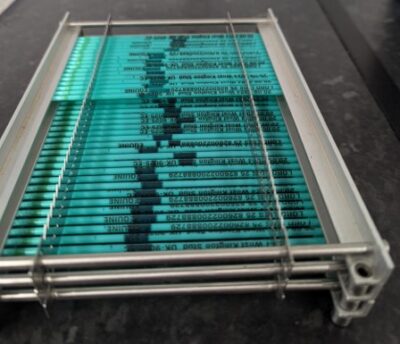 With knowledge of the concentration of the spermatozoa in an ejaculate and knowing how many are alive, the volume required to make an insemination dose can be calculated. The relevant volume can then be mixed with semen extender to maximise its lifespan, prior to packaging and sending to the mare for insemination.
With knowledge of the concentration of the spermatozoa in an ejaculate and knowing how many are alive, the volume required to make an insemination dose can be calculated. The relevant volume can then be mixed with semen extender to maximise its lifespan, prior to packaging and sending to the mare for insemination.
* * *
Chris Shepherd was responsible for the early development of the stud and reproduction department at B&W. He was instrumental in advancing artificial insemination (AI) in the UK, working on the BEVA AI subcommittee and with DEFRA. Until recently, Chris served as a DEFRA examiner for lay inseminators following the deregulation of AI. He was also a member of the scientific programme organizing committee for the 2010 BEVA Congress. His clinical caseload is primarily stud-oriented, managing a diverse mix of competition horses and Thoroughbred (TB) clients. Additionally, he is the retained veterinarian for one of the largest TB producers worldwide.
